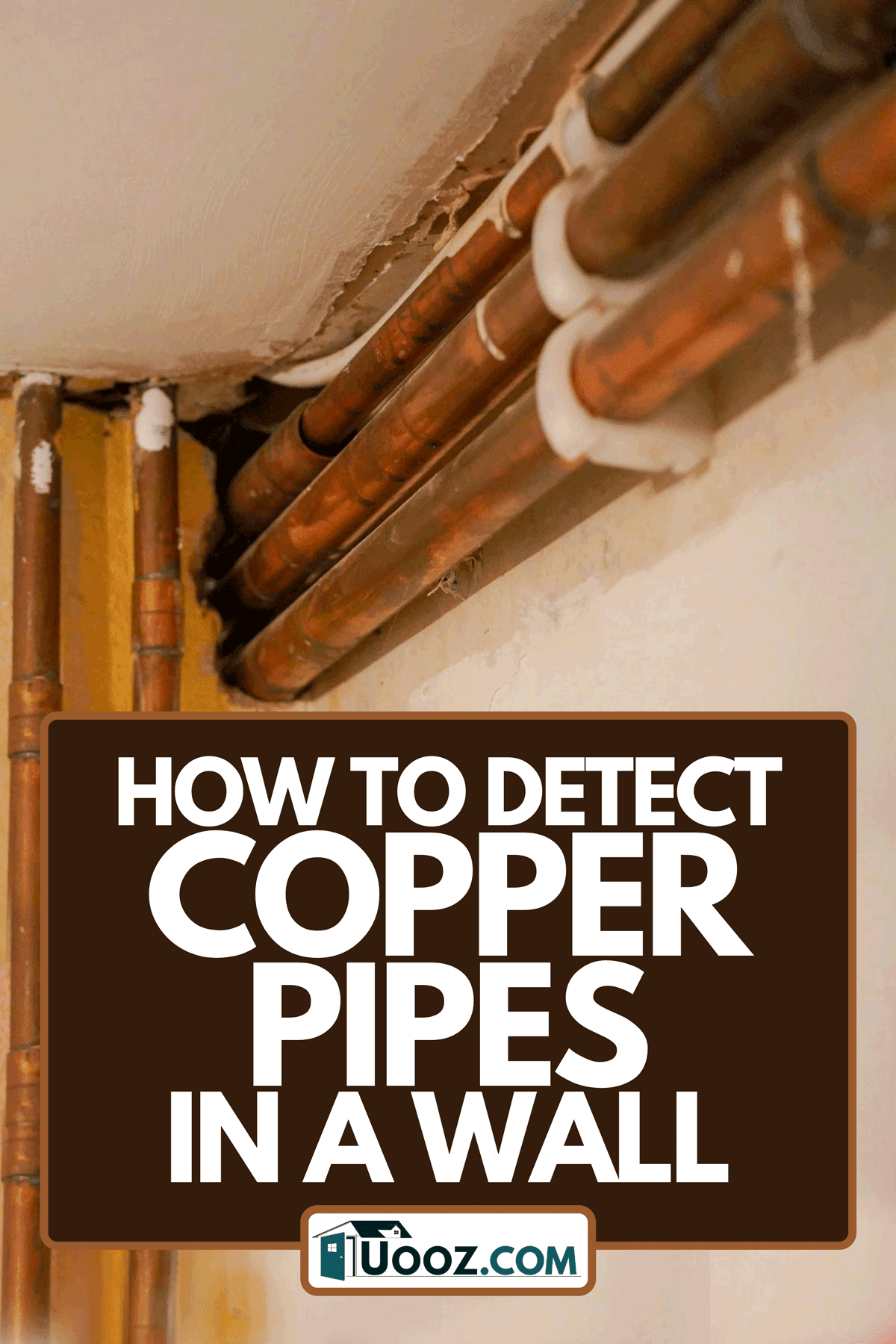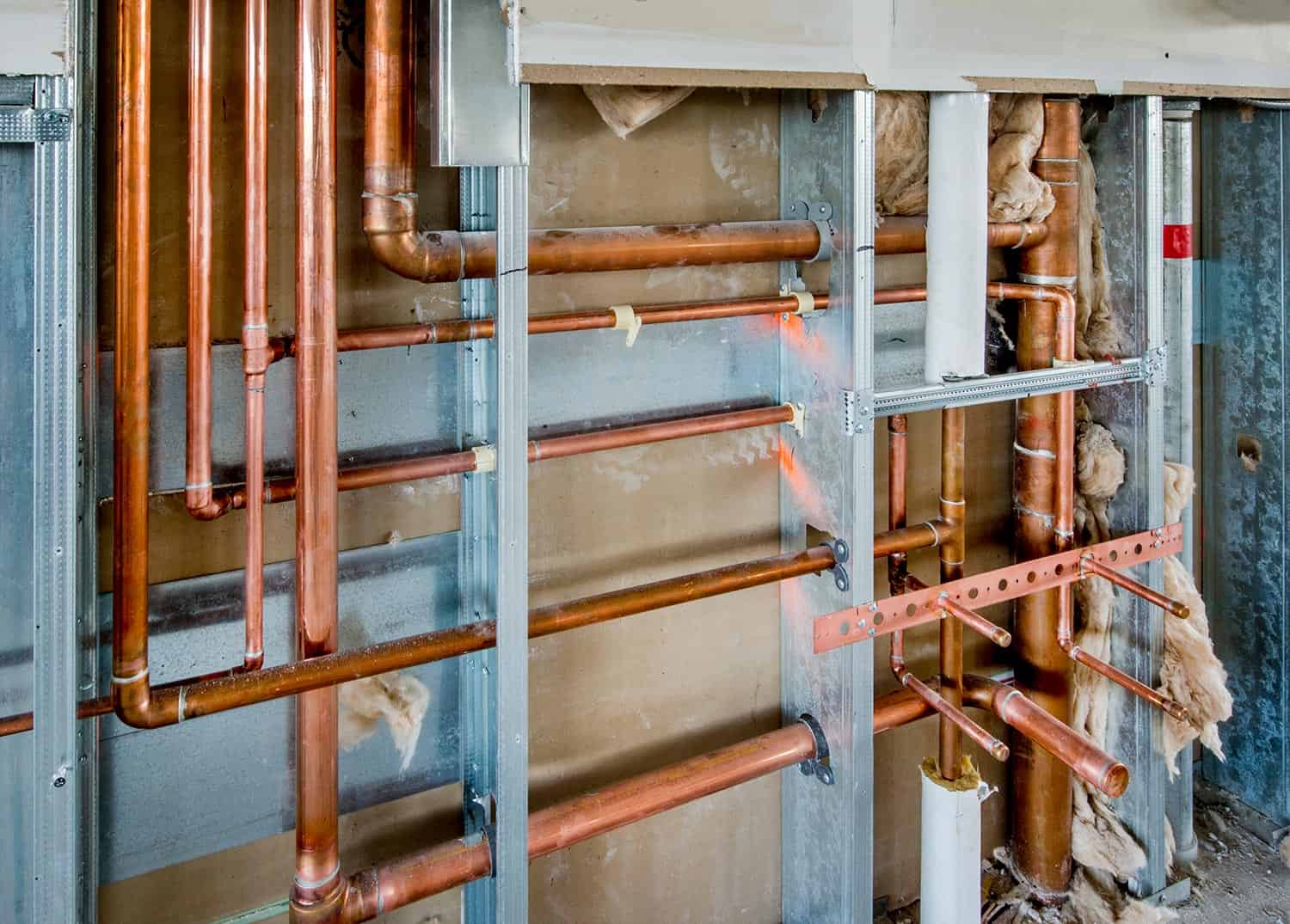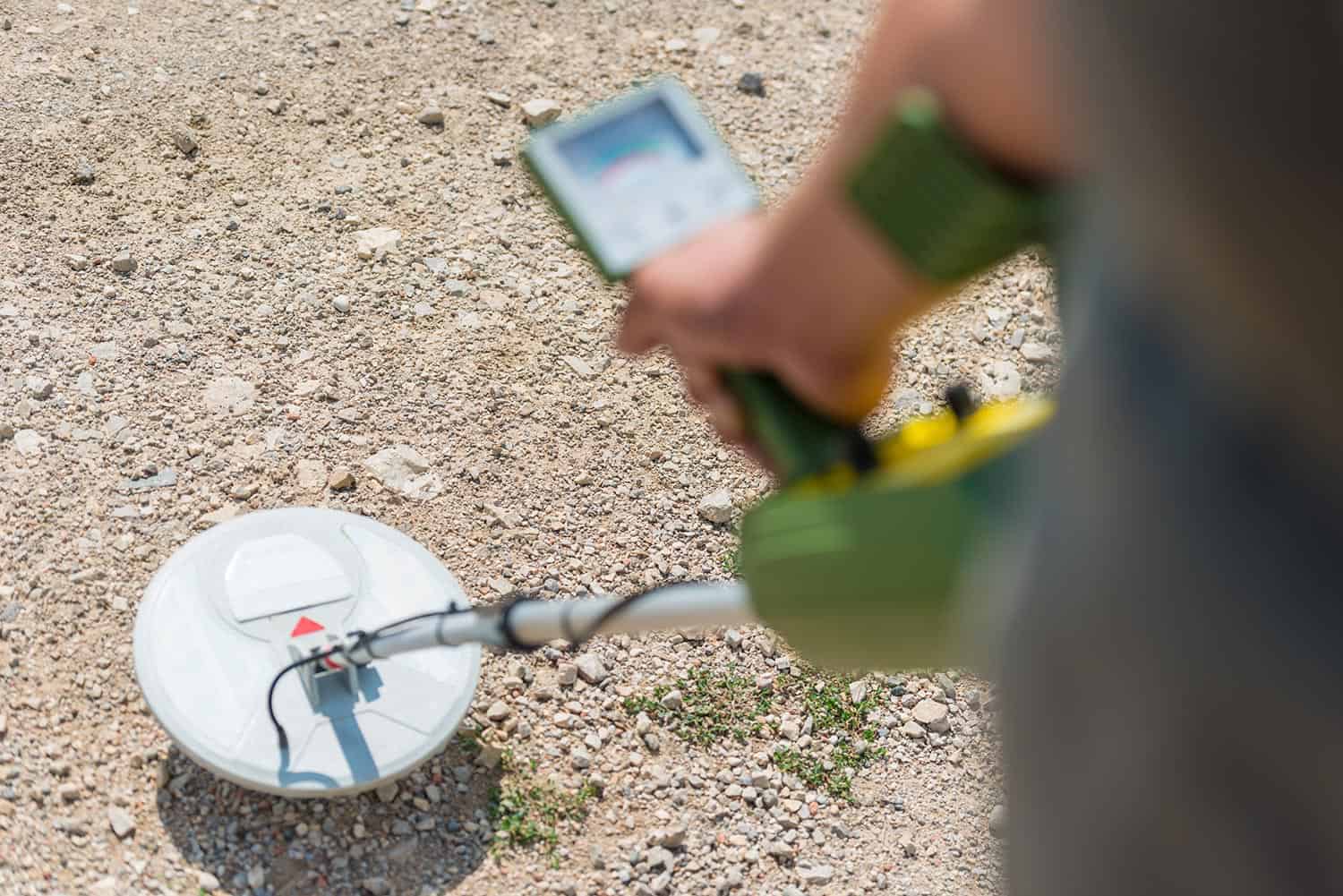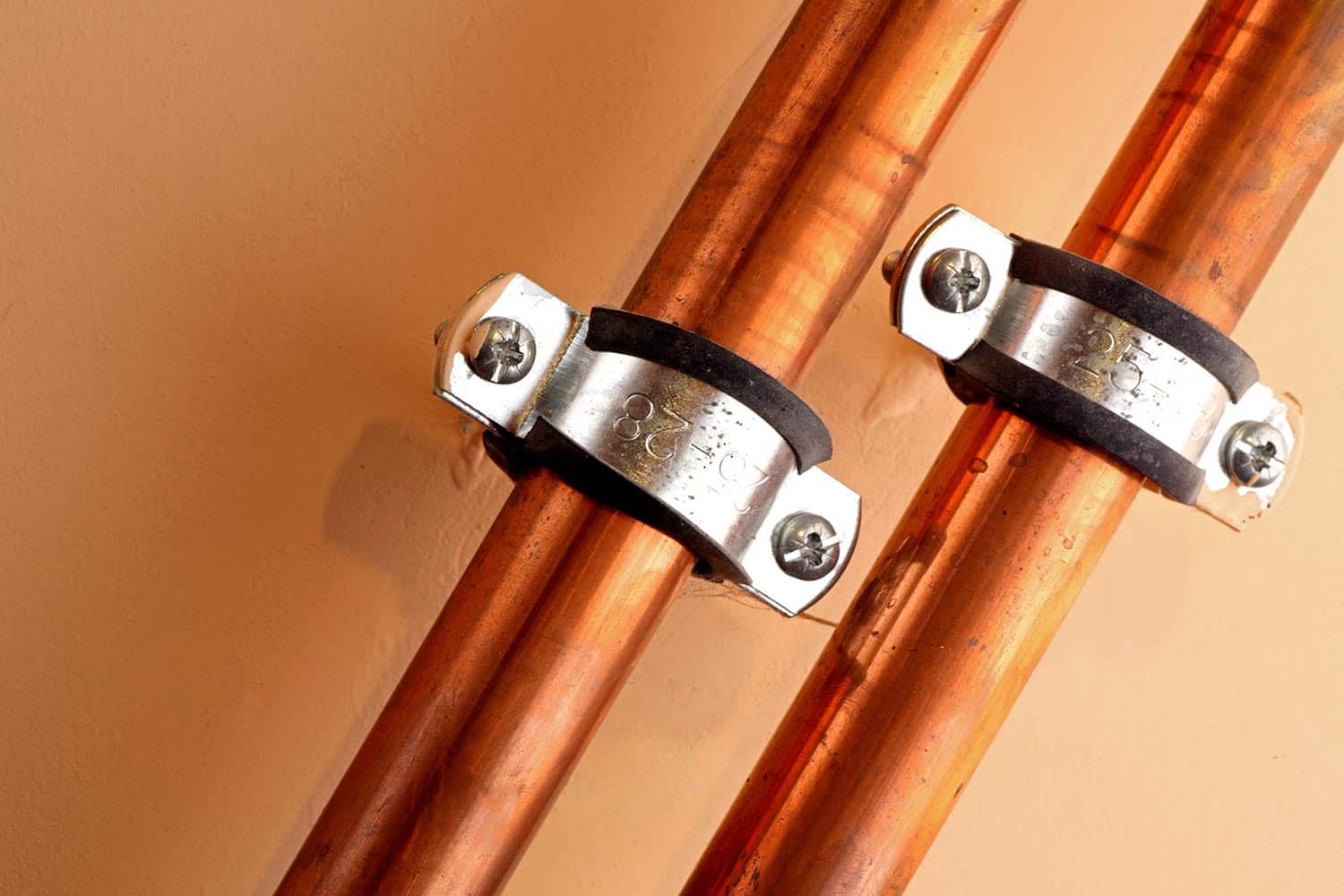Puncturing a copper pipe during a home remodeling project can lead to disastrous results. Take the time to locate the plumbing system behind a wall to avoid expensive mishaps. But how can you detect copper pipes in walls? Can you find the plumbing behind drywall or concrete using a non-destructive method? We researched these concerns for your convenience.
Use stud finders with non-ferrous metal-detecting features to help you find copper pipes behind walls. Specific models can also help detect copper behind materials like concrete and drywall. Some options to check are:
- Tavool na 6-in-1 Stud Finder
- Nulksen 5-in-1 Wall Detector
- Bosch GMS120 Digital Multi-Scanner
- Zircon MetalliScanner M40
- VIVREAL Stud Finder
Make sure to purchase and use the appropriate stud finder to help you locate copper pipes with minimal risk of error. Keep reading as we talk about these products in greater detail. We'll also discuss other relevant matters, such as how to check if a pipe has copper or steel built behind a wall.

How To Find Copper Water Pipes In Walls?
Consulting the blueprints to your home can be a good way to check the pipes’ materials behind walls. But if you don’t have access to your house’s schematics, you can use a stud finder that can detect non-ferrous metals like copper behind different surfaces.
But take note that different models provide varying efficacies in finding copper pipes behind certain objects. For example, some stud detectors may do well in searching for copper behind drywall but may have difficulty locating the metal at the back of concrete.

Here are some options we found around the market for this cause:
1. Tavool na 6-in-1 Stud Finder
This stud finder does a good job in detecting copper pipes behind drywall. It can also detect other metal objects behind drywall, including rebar and steel. The magnet at the bottom of the unit can also help prevent false positives and confirm the position of the metal piece behind a dense object.
Check out this product on Amazon.
2. Nulksen 5-in-1 Wall Detector
With convenience-focused features, this stud finder and wall detector may not require human intervention to detect the right settings for specific jobs. It calibrates its settings automatically, and it can detect things like wood, rebar, and copper pipes in walls up to 1-1/2 inches thick.
Check out this product on Amazon.
3. Bosch GMS120 Digital Multi-Scanner
Use this digital stud finder to detect copper pipes and other objects behind walls made with different materials. It produces a beeping sound to indicate articles behind wall materials like concrete and drywall.
Check out this product on Amazon.
4. Zircon MetalliScanner M40
Albeit it’s not a dedicated stud finder, this product can detect ferrous and non-ferrous metals behind walls and other thick surfaces. It can locate copper plumbing behind concrete and plaster, as long as the walls are only up to two inches thick.
Check out this product on Amazon.
5. VIVREAL Stud Finder
This product has four scan modes, three of which are usable for finding specific objects like copper and wood behind walls. The other mode is for deep scanning, allowing the tool to detect objects behind surfaces of up to 5-1/2 inches deep.
Check out this product on Amazon.
How To Avoid False Positives With A Stud Finder?
Improper use of stud finders can lead to false positives or reading errors. The first step to ensuring the accuracy of the device’s records is to use the correct stud detector. Take note that stud finders often come in two main categories, which are:
- Magnetic: Generally used for finding nails and screws behind walls.
- Center-finding: Ideal for searching for relatively large or heavy objects behind fairly dense surfaces.
After acquiring the correct model, read these tips to ensure your stud finder produces accurate results:
- Remove wall-mounted objects. Things like nails used for hanging picture frames may interfere with the detector’s readings.
- Check the battery. Weak-powered stud finders are usually prone to produce distorted measurements.
- Make small movements. Allow the stud detector to search within a two-foot radius from the possible location of the object you’re trying to find.
- Double-check the results. Move a few inches left-to-right and up-and-down to the area where the detector is beeping the most. Then, mark the center of that location for it to remind you of the location of the stud.
Can A Metal Detector Detect Copper Pipe?

Metal detectors can help locate copper pipes behind surfaces. These devices use search coils that transmit electromagnetic fields onto surfaces. If the signals bounce off of another object, the detector receives those indicators and relays them to the user through beeps.
Take note that conventional detectors can aid in finding metal objects, but they can’t tell you if the objects are copper pipes. Some traditional units can generally detect small metal objects like coins and jewelry below ground.
But some advanced metal detectors have discrimination features. These functionalities can read the returning signals and identify the size, shape, and/or type of object behind surfaces. Think of this feature like how a bat’s echolocation works.
Watch the short video below to see how a metal detector works:
Check out this metal detector on Amazon.
How Can You Tell If A Pipe Is Steel Or Copper?
Magnets can help detect if a pipe behind a surface is copper or steel. A reasonably powerful magnet like an N52 grade model can assist in checking the material of a fitting at the back of a wall.
Try to stick the magnet to a wall, which should also be the place for your home’s plumbing system. Since copper is a non-magnetic material, the magnet should fall if the pipes use copper or plastic for their builds. Otherwise, the magnet should stay in place if the pipes have galvanized steel constructions.
Check out these magnets on Amazon.
But some properties may use copper pipes derived from recycled materials. This mixture of substances may include metals that may also cause the magnet to stick to the wall, leading to a false positive.
Check the building’s blueprints or use a stud finder to verify the outcome of your test. Additionally, read our post on the construction of copper to gain more knowledge about the metal.
Do Modern Homes Use Copper Pipes?

Many modern homes use copper pipes in their plumbing systems. The reasons for using this material to carry water across properties often differ depending on user preferences, official building codes, and specific project demands.
Some of the reasons why homeowners prefer copper over other materials for their plumbing are:
- Although copper can corrode, it can take a significantly long time before the problem appears.
- Copper is a durable and lightweight material that can generally withstand pressures up to 1,000 psi.
- Copper is a naturally-occurring metal, making it a more eco-friendly option than plastic.
- It’s a reasonably inexpensive material with above-average flexibility.
Homeowners should also pay attention to the potential disadvantages of using copper pipes. For instance, plumbing systems connected to wells may not do well with copper fittings. This particular metal might encounter adverse reactions because of the water’s acidic level, increasing risks of health issues when drunk.
Watch the video below for a comparison of the different materials used for plumbing pipes, including copper:
How Long Do Copper Pipes Last?
Copper pipes can last up to 50 years with proper care. Take note that copper doesn’t rust, but it can corrode. Corrosion can occur when the copper mixes with other minerals like calcium and salt.
The result is a green stain, which can spread throughout the metal if left unchecked. You can also read our post on the life of a copper pipe for more information.
Can You Use Your Phone To See Through Walls?
At the time of writing, mobile technology hasn’t developed a way to gain clear visions behind dense walls. However, you can use your smartphone and a stud finder app to help locate hidden objects behind surfaces. These applications can help search for reasonably small things like earrings and keys.
However, many stud finder apps may still have difficulty searching for large things like copper pipes. Moreover, the efficacy of the app’s performance can also vary depending on the smartphone’s model and the magnets inside it.
Here's a video of a person using a stud finder app to locate nails behind a drywall:
Final Words
Stud finders can be ideal non-destructive solutions to find copper pipes behind walls. Use these handheld devices with magnets to help verify if the pipes have either copper, plastic, or steel constructions. You can also consult the establishment’s blueprints to check the materials used in the building’s plumbing system.







